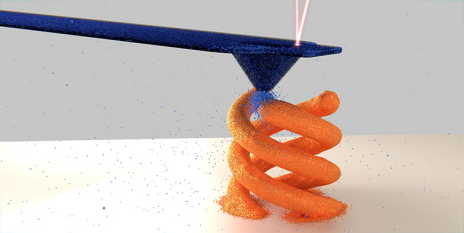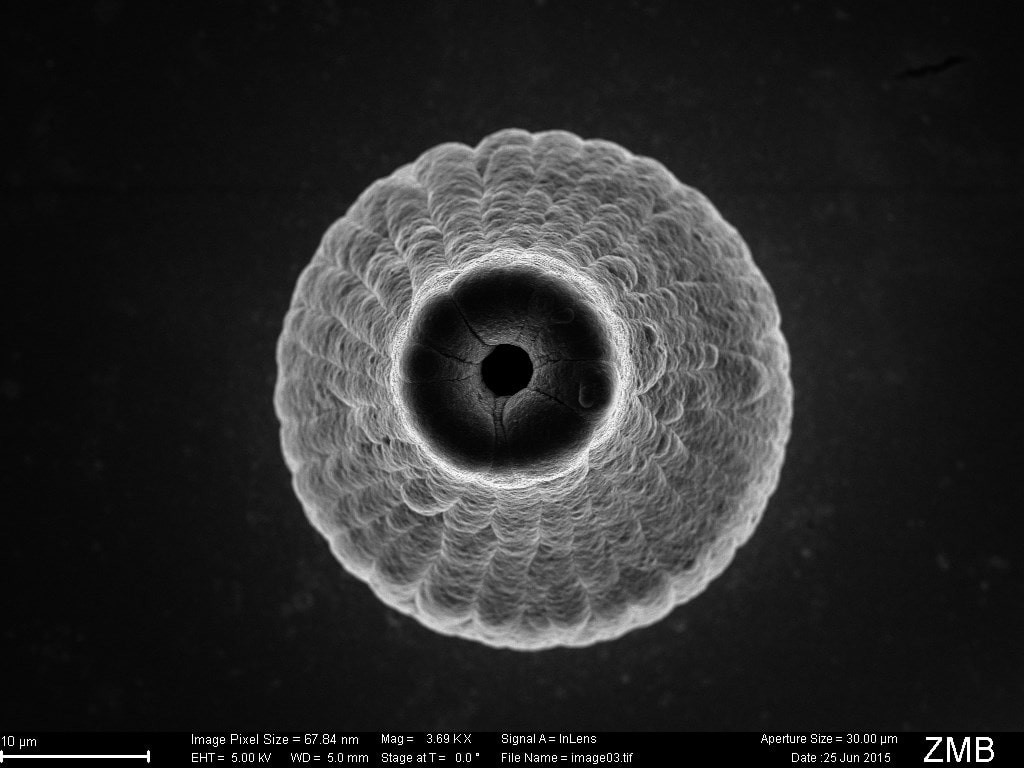 Two of the fastest-growing segments of the additive manufacturing industry are metal 3D printing and micro 3D printing. It makes sense, then, that a combination of the two would be close behind. ETH Zurich and their spin-off company, Cytosurge AG, have developed a novel technology for 3D printing metal components on a nano level. It’s called FluidFM, and it’s already been used in biological research, but it’s about to hit new markets and potentially have a major impact on a large number of industries.
Two of the fastest-growing segments of the additive manufacturing industry are metal 3D printing and micro 3D printing. It makes sense, then, that a combination of the two would be close behind. ETH Zurich and their spin-off company, Cytosurge AG, have developed a novel technology for 3D printing metal components on a nano level. It’s called FluidFM, and it’s already been used in biological research, but it’s about to hit new markets and potentially have a major impact on a large number of industries.
Metal 3D printing on a nano level isn’t unheard of, but the methods used thus far are pretty limited. For the most part, it’s done using laser assisted sintering, a risky process when you’re working with highly reactive metal nanoparticles. Stringent safety measures are required, costing a lot of time and money. The objects that can be printed have their limits, too – for example, it’s very difficult and time-consuming to print overhanging structures.
 FluidFM changes all of that. The process involves a moveable pipette, mounted on a cantilever leaf-spring, through which a copper sulfate solution flows, exiting through an aperture of 300 nanometers. An electrode produces a voltage under the aperture, which solidifies the copper sulfate as it exits and allows a solid copper structure to be built up on a gold plate.
FluidFM changes all of that. The process involves a moveable pipette, mounted on a cantilever leaf-spring, through which a copper sulfate solution flows, exiting through an aperture of 300 nanometers. An electrode produces a voltage under the aperture, which solidifies the copper sulfate as it exits and allows a solid copper structure to be built up on a gold plate.
“This method can be used to print not only copper but also other metals,” said Tomaso Zambelli, associate lecturer and group leader at the Laboratory of Biosensors and Bioelectronics at ETH Zurich. “FluidFM may even be suitable for 3D printing with polymers and composite materials.”
 The technology allows for partially overhanging nanostructures to be printed in one step, improving greatly on the complicated, multi-step process currently required for printing overhangs. The pipette used for FluidFM can print sideways, eliminating the need for the template required for overhangs in other micro 3D printing processes. It’s also possible to measure the forces acting on the pipette via the deflection of the leaf spring.
The technology allows for partially overhanging nanostructures to be printed in one step, improving greatly on the complicated, multi-step process currently required for printing overhangs. The pipette used for FluidFM can print sideways, eliminating the need for the template required for overhangs in other micro 3D printing processes. It’s also possible to measure the forces acting on the pipette via the deflection of the leaf spring.
“We can use this signal as feedback,” said ETH doctoral student Luca Hirt. “Unlike other 3D printing systems, ours can detect which areas of the object have already been printed.”
This makes it possible to automate the printing process, which was developed by Hirt as part of his doctoral thesis. FluidFM, which was invented by scientists at ETH years ago, has been used in medicine and biological research to inject substances into individual cells or to sort and analyze cells, among other things. Hirt decided to see if it could be used for electrochemical 3D printing, and he was successful. Cytosurge has been marketing FluidFM for biological applications for three years, and they are now looking for research teams from universities as well as industries to begin applying the new printing method.
“We see big market potential in the printing process and an opportunity to further diversify our company,” said Dr. Pascal Behr, co-founder and CEO of Cytosource. “We are convinced of the idea of using FluidFM in 3D microprinting. Now, the task is to optimise this application in collaboration with interested researchers at universities and in industry – for example, in the watchmaking, medical technology and automotive sectors.”
“Template-Free 3D Microprinting of Metals Using a Force-Controlled Nanopipette for Layer-by-Layer Electrodeposition,” the full research paper, authored by Luca Hurt, Stephan Ihle, Zhijian Pan, Livie Dorwling-Carter, Alain Reiser, Jeffrey M. Wheeler, Ralph Spolenak, János Vörös and Tomaso Zambelli, is available here. If you’re interested in collaborating with Cytosurge, or investing in the new technology, you can contact them here. Discuss FluidFM technology in the 3D NanoPrinting in Metal forum over at 3DPB.com.
Subscribe to Our Email Newsletter
Stay up-to-date on all the latest news from the 3D printing industry and receive information and offers from third party vendors.
You May Also Like
Why Corrosive Resistant Materials Are Important to the Success of 3D Printing Across Industries
The adoption of additive manufacturing (AM) is accelerating across many major industries. As this technological shift unfolds, the importance of corrosion resistance has emerged as a challenge for 3D printing...
America Makes Announces IMPACT 2.0: $6.6M in New 3D Printing Funding
America Makes, the Manufacturing Innovation Institute (MII) based in Youngstown, Ohio, has announced IMPACT (Improvement in Manufacturing Productivity via Additive Capabilities and Techno-Economic Analysis) 2.0, a project call which will...
3D Printing Webinar and Event Roundup: April 14, 2024
We’re starting off the week’s 3D printing webinars and events at ASTM AMCOE’s 11th Snapshot Workshop and MACH Exhibition. Stratasys continues its advanced training courses, SME is holding a virtual...
AMUK Welcomes Airframe Designs as British 3D Printing Industry Grows
While the UK is not the hub for 3D printer and materials manufacturers as other nations, the country continues to excel at the research, development, and application of additive manufacturing...

































